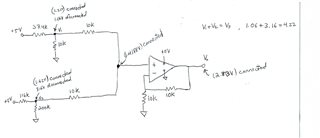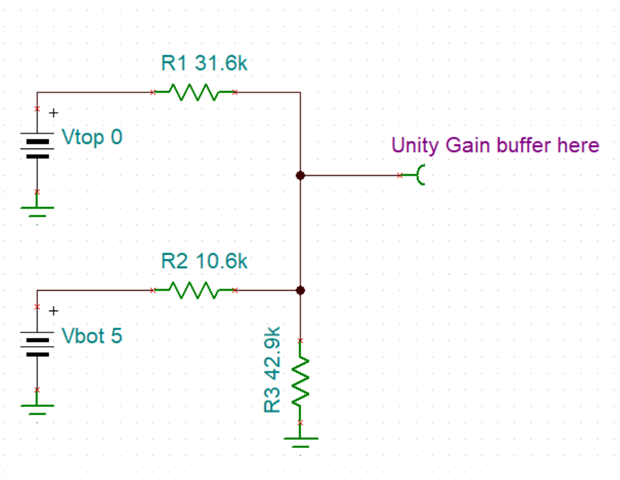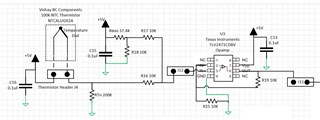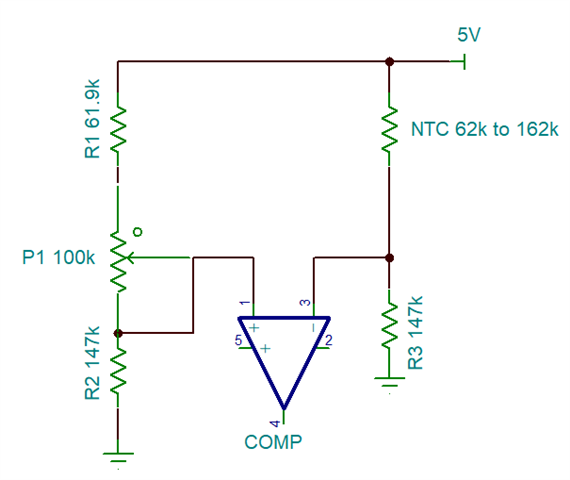Hi Team,
Customer is getting the expected output when TLV2471 used in summing circuit. Below is the details.
"
I have re-tested the device configuration and am getting a good response based on "measured" inputs. The inputs (V1 & V2) i have created change values as soon as i power the circuit with them connected to the summing inputs. In isolation, V1 & V2 are correct according to voltage division rules but incorrect when powered.
For example:
V1 is composed of a 10K and 37.4k resistor connected to a 5V source. Powered in isolation it provides an output of: (10/(10+37.4))*5= 1.06V
Note: when powered on, this same measurement changes to 1.21V
V2 is comprised of a 200k resistor and a 116K resistor connected to a 5V source. Powered in isolation it provides an output of: (200/(200+116))*5=3.16V
Note: when powered on, this same measurement changes to 1.62V
The powered on value when measured at the summing point is: 1.4188V
The output measures 2.83V (expected response given powered on values)
I was expecting to see 1.06+3.16=4.22V but did not see this?

"
Thank you in advance.
Regards,
Maynard





